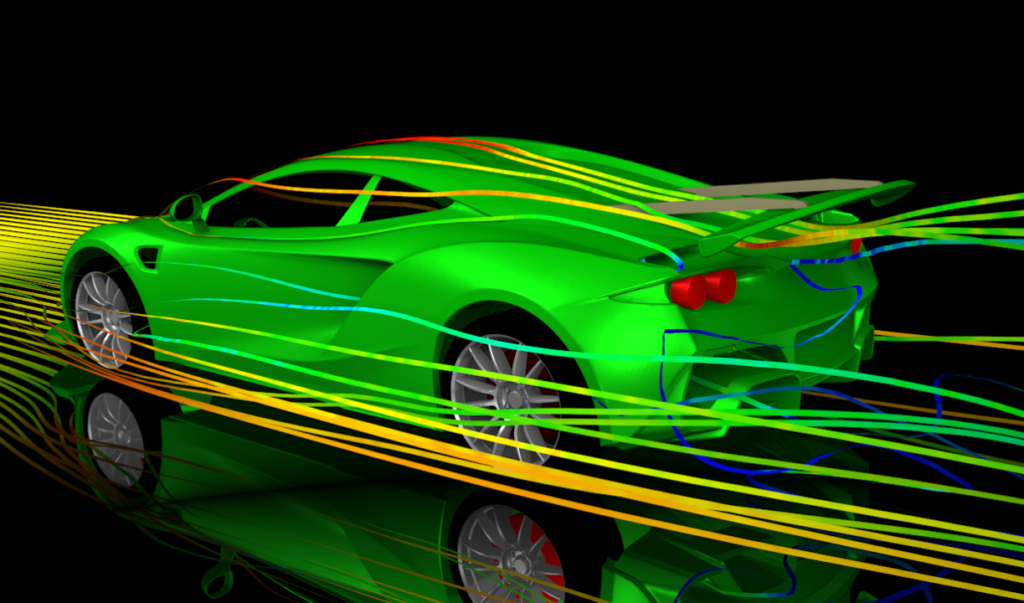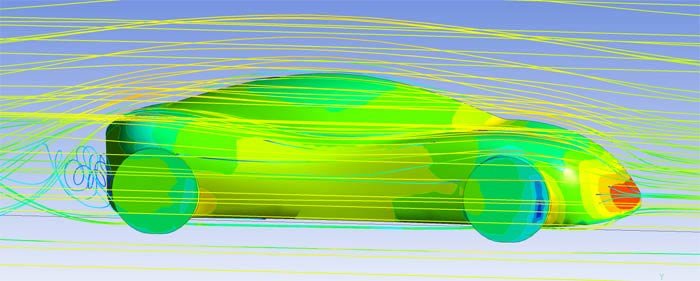Introduction

In the pursuit of sustainable transportation, electric vehicles (EVs) have emerged as a promising solution. Beyond the advancements in battery technology, the aerodynamic design of EVs plays a pivotal role in enhancing efficiency and extending range. This article delves into the world of electric vehicle aerodynamics, shedding light on its significance and practical implications.
The Impact of Aerodynamics on Electric Vehicle Efficiency

Aerodynamics is a critical factor in any vehicle’s energy consumption. In electric vehicles, minimizing aerodynamic drag is particularly crucial as it directly affects the vehicle’s range. We’ll explore how a sleek and aerodynamically optimized design reduces air resistance, allowing EVs to travel farther on a single charge.
● Aerodynamic Drag: Understanding its Significance in Vehicle Efficiency
● Streamlining Design: How Shape and Contours Affect Airflow and Drag
● Range Anxiety: The Role of Aerodynamics in Extending Electric Vehicle Range
● Energy Consumption: How Aerodynamic Efficiency Directly Affects Battery Usage
● Cd Value and Wind Resistance: Quantifying Aerodynamic Performance in EVs
● Wind Tunnel Testing: Validating and Optimizing Aerodynamic Design for EVs
● Vehicle Design Considerations: Balancing Aesthetics with Aerodynamic Efficiency
● Tire Rolling Resistance: The Interplay of Aerodynamics and Tire Design
● Regenerative Braking: Enhancing Efficiency through Aerodynamic Deceleration
● Future Innovations: Advances in Aerodynamics for Next-Generation Electric Vehicles.
Designing for Efficiency: Streamlining Shapes and Features
From the curvature of the body to the integration of features like flush door handles and underbody panels, every aspect of an electric vehicle’s design is meticulously crafted to enhance aerodynamic performance. This section delves into the specific design elements that engineers employ to reduce drag and improve overall efficiency.
Regulating Airflow: Ventilation and Cooling Systems
Electric vehicles require efficient thermal management to ensure that components like batteries and power electronics operate within their optimal temperature ranges. The design of ventilation and cooling systems is a delicate balance between providing sufficient airflow for heat dissipation while minimizing aerodynamic losses. We’ll explore how engineers strike this balance in EV design.
● Ventilation in Engineering: Importance in Managing Heat and Air Quality
● Active vs. Passive Ventilation: Methods for Controlling Airflow and Cooling
● Industrial Applications: Ventilation Systems in Manufacturing and Processing Plants
● HVAC Systems: Heating, Ventilation, and Air Conditioning for Indoor Environments
● Automotive Cooling: Radiators and Fans for Engine Temperature Regulation
● Electronics Cooling: Ensuring Optimal Operating Temperatures for Components
● Natural Ventilation Techniques: Harnessing Natural Airflow for Cooling Purposes
● Computational Fluid Dynamics (CFD): Simulating Airflow and Heat Transfer for Design Optimization
● Energy Efficiency in Ventilation: Implementing Sustainable Cooling Solutions
● Regulatory Compliance: Standards and Guidelines for Ventilation Systems
Innovations in Wind Tunnel Testing and Computational
Simulations
Wind tunnel testing and computational fluid dynamics (CFD) simulations are essential tools for evaluating and optimizing the aerodynamic performance of electric vehicles. Advanced testing techniques and highly accurate simulations allow engineers to refine designs virtually, resulting in vehicles with reduced drag coefficients and improved efficiency. This section provides insights into the state-of-the-art methods used in aerodynamic testing for EVs.
The Role of Active Aerodynamics
Active aerodynamic features, such as adjustable spoilers and flaps, are becoming increasingly prevalent in electric vehicles. These dynamic elements adapt to driving conditions, optimizing aerodynamic efficiency at high speeds while maintaining stability during braking. We’ll explore how active aerodynamics are integrated into EV design to further enhance efficiency.
● Dynamic Aerodynamics: Adapting Vehicle Shape for Optimal Performance
● Active vs. Passive Aerodynamics: Implementing Adjustable Components for Efficiency
● Variable Spoilers and Wings: Optimizing Downforce and Drag Based on Driving Conditions
● Adjustable Grilles and Air Intakes: Balancing Engine Cooling and Aerodynamic Efficiency
● Active Flaps and Ducts: Redirecting Airflow to Enhance Vehicle Stability and Efficiency
● Automotive Industry Applications: Sports Cars, Supercars, and High-Performance Vehicles
● Fuel Efficiency and Range: How Active Aerodynamics Impact Electric and Hybrid Vehicles
● Advanced Control Systems: Sensors and Algorithms for Real-Time Aerodynamic Adjustments
● Wind Tunnel Testing: Validating and Fine-Tuning Active Aerodynamic Features in Design
● Future Trends: Integrating Active Aerodynamics with Autonomous Driving and AI Systems.
Future Trends: Advancements in Electric Vehicle Aerodynamics
As electric vehicle technology continues to evolve, so too will the strategies employed to improve aerodynamic efficiency. This section provides a glimpse into future trends, including advancements in materials, innovative design concepts, and the potential integration of emerging technologies like autonomous driving and vehicle-to-everything (V2X) communication.
● Streamlined Designs: Evolving Shapes for Improved Airflow Efficiency and Range
● Integration of Active Aerodynamics: Adaptive Components for Dynamic Efficiency
● Drag Reduction Technologies: Innovations in Controlling Air Resistance
● Multi-Modal Airflow Control: Optimizing Cooling and Efficiency Simultaneously
● Computational Simulations: Advancements in Predictive Modeling for Aerodynamic Optimization
● Materials Innovation: Lightweight and Aerodynamically Designed Components
● Exterior and Interior Flow Management: Enhancing Passenger Comfort and Efficiency
● Noise Reduction through Aerodynamic Enhancements: Improving EV Acoustics
● Collaborative Efforts: Cross-Industry Partnerships in EV Aerodynamics Research
● Sustainable Aerodynamic Solutions: Eco-Friendly Materials and Manufacturing Processes.
Conclusion: Pioneering Efficiency in Electric Mobility
Electric vehicle aerodynamics represent a critical frontier in the quest for sustainable transportation. By optimizing designs for reduced drag, engineers are unlocking new levels of efficiency and range in electric vehicles. As technology continues to advance, the integration of innovative aerodynamic concepts promises to reshape the landscape of electric mobility, paving the way for a greener and more sustainable future.
